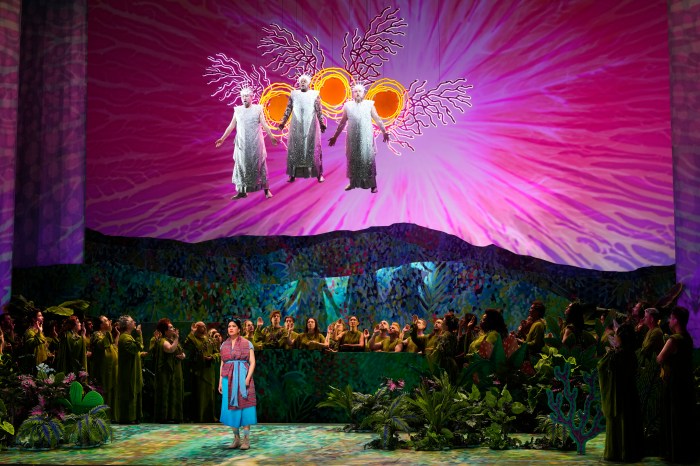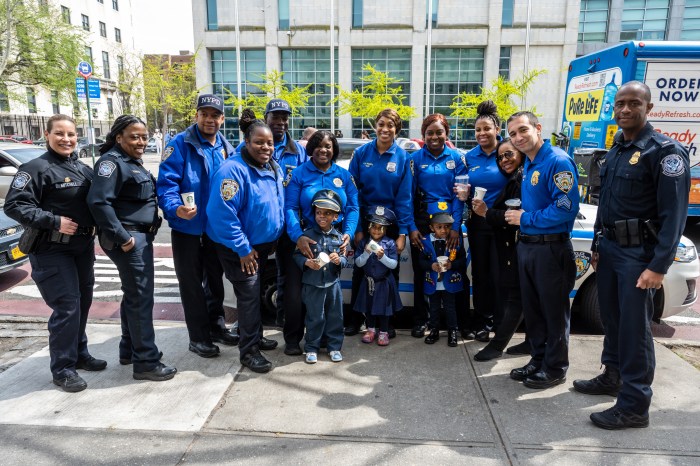At a time when many art galleries are struggling to keep their doors open in the face of a constantly changing market, Lehmann Maupin is cementing its ambitious ascent to the top of the art world with a new Chelsea flagship, a recently opened Seoul gallery, and a thriving home in Hong Kong.
Founded in 1996 by Rachel Lehmann and David Maupin, the gallery has come a long way from its humble SoHo beginnings. It now boasts four locations worldwide and more in the works, including a London viewing gallery set to open by 2020. But Lehmann Maupin, whose artists include Marilyn Minter, Juergen Teller, Liu Wei, and Liza Lou, has remained steadfastly focused on discovering, showcasing and supporting underrepresented artists from all over the world.
“Lehmann Maupin has always been very diverse in its roster of artists,” says sales partner Jessica Kreps, who’s been with the gallery since 2009. “And gender and racial equity remain integral to us.”
She is also quick to point out that Lehmann Maupin also boasts unexpected age diversity among its artists. Cecilia Vicuña, a 70-year old Chilean artist who was relatively unknown just a few years ago, and 72-year old McArthur Binion, a Chicago-based, African-American artist who’s seen a “meteoric rise,” are both recent additions to the gallery. “Our job is to bring to light artists who haven’t had that platform,” Kreps adds.
Indeed, Lehmann Maupin has garnered a reputation among artists, gallerists and patrons alike for its unique lineup of artists, a quality that has even led to the openings of its Hong Kong and Seoul galleries over the last five years. After seeing continued success with Asian artists and collectors, the gallery realized the need to establish a physical presence in the Far East and opened its Hong Kong location in 2013.
“Hong Kong really has a booming economy and a well-established art world, and it seemed like the perfect gateway to China and Southeast Asia,” says Kreps.
Lehmann Maupin opened a second location in the region over the last year. With several prominent Korean artists on its roster, including Lee Bul, Do Ho Suh, and Suh Se Ok, and the growing base of collectors there, Seoul seemed like the perfect city for the gallery.
“The Korean public is among the most educated about the art world, Kreps says. “It’s definitely been the right step for us in expansion.”
The gallery has long held two New York locations, opening originally in SoHo and eventually moving to Chelsea, with another location on the Lower East Side, but in opening its new space on 24th Street, the gallery decided to close the doors of its Chrystie Street space."
Kreps explains that it was becoming increasingly difficult to get the right people to the Chrystie Street location. “Chelsea just has a more concentrated public of art collectors and viewers,” she says, noting that, despite their proximity, the 22nd and 24th Street galleries will function very differently.
Once the location of a Getty gas station, the northwest corner of 24th Street and 10th Avenue is now home to architect Peter Marino’s latest residential marvel, The Getty (named after its petroleum-rich predecessor). Lehmann Maupin’s new space — which lives in the lower levels of the Highline-adjacent building and is actually owned by the gallery unlike its other rented locations — spans three floors and boasts four galleries throughout its 8,971-square feet.
Marino is a close friend of Lehmann and Maupin and an illustrious art collector in his own right. When he initially reached out to the gallerists about a potential home for them at the Getty, it was an easy decision. Lehmann Maupin then worked alongside Marino to create the ideal space with its artists at the forefront.
“One of the things we were looking to do with the new location was to showcase new media and larger works,” says Kreps. With a 23-foot ceiling, the sun-drenched and pillar-free galleries at the 24th Street space create an unprecedented venue for works like Lou’s 50 x 22 foot “The Clouds,” the pièce de résistance of the artist’s solo show currently on view.
But Kreps is sure to note that you “don’t always need the largest space for the largest impact,” which is the very philosophy that helped conceive the gallery’s “black box space,” whose lower ceilings and depleted natural light offer ideal homes for video-based or more intimate works.
“A lot of our artists are excited by the new challenges the space presents,” Kreps says, adding that some will likely create artwork that caters to the new space, while others will be able to exhibit pieces formerly too large for the gallery.
“It’s beautiful almost to a fault,” says longtime Lehmann Maupin artist Nari Ward of the new gallery. “But I’m looking forward to messing it up.”
Collector Noel Kirnon, a former finance executive who’s purchased works by Ward, Alex Prager, Mickalene Thomas, and several other artists through the gallery, is equally optimistic about the new location.
“The space is beautiful, accessible and well-located. I imagine that the flexibility of the space might inspire artists to create work that could not have been shown optimally in former spaces,” he says, noting that such accommodation might attract even more artists to the gallery. “With real estate permanence, if there is such a thing, I expect that there will be even more energy devoted to robust programming and artist development.”
It is indeed Lehmann Maupin’s innovative exhibitions and supportive relationships with its artists that has allowed the gallery to succeed and expand in recent years. As new players like websites Artsy and Artnet change the game of art-buying, many galleries have done whatever it takes to thrive monetarily, even at the expense of their artists. Lehmann Maupin, however, has welcomed new platforms and is confident that “there will always be a strong desire to see art physically,” as Kreps notes, especially before spending thousands of dollars on it.
“We try to strike a balance between creative and commercial,” the partner says. While the gallery stays more or less true to the industry standard of splitting sales 50/50 with artists, Lehmann Maupin goes out of its way to support artists’ outside endeavors, including museum exhibitions, public art showcases, and instillations.
“It’s a business, and they’ll always remind you of that,” says Ward, who’s been with the gallery for nearly eight years. “But they really want to work with you and support you.”
Ward’s “Till, Lit” show, which examined how value is constructed in modern culture, was on view at Lehmann Maupin’s 22nd Street location last summer and saw a percentage of sales donated to New York-based charity organization Housing Works. “They couldn’t have been more supportive of that endeavor,” the artist says of the gallery.
Although it’s impossible to say what the next few years will mean for the art world, Lehmann Maupin appears determined to continue its path as a pioneer and industry leader. And with all four galleries constantly abuzz with visitors, all anxious to see what Lou or Minter or Ward will create next, it certainly seems like the right path to take.

















